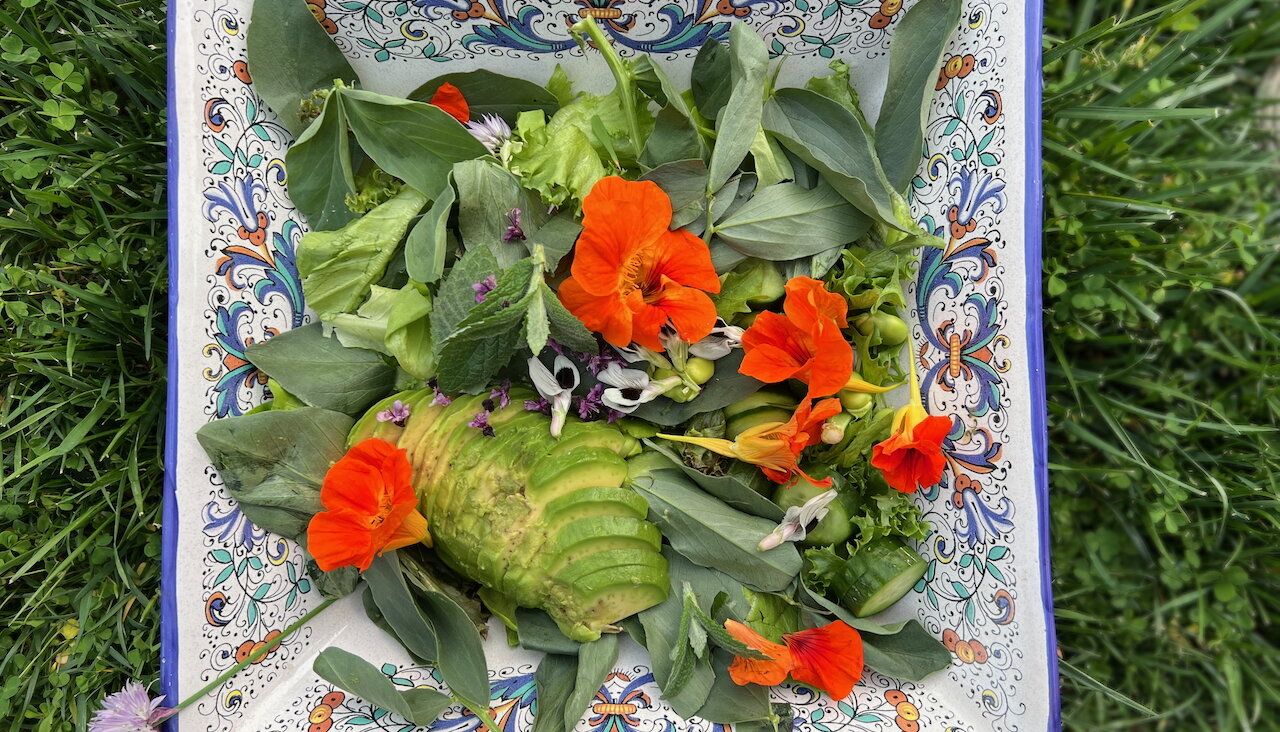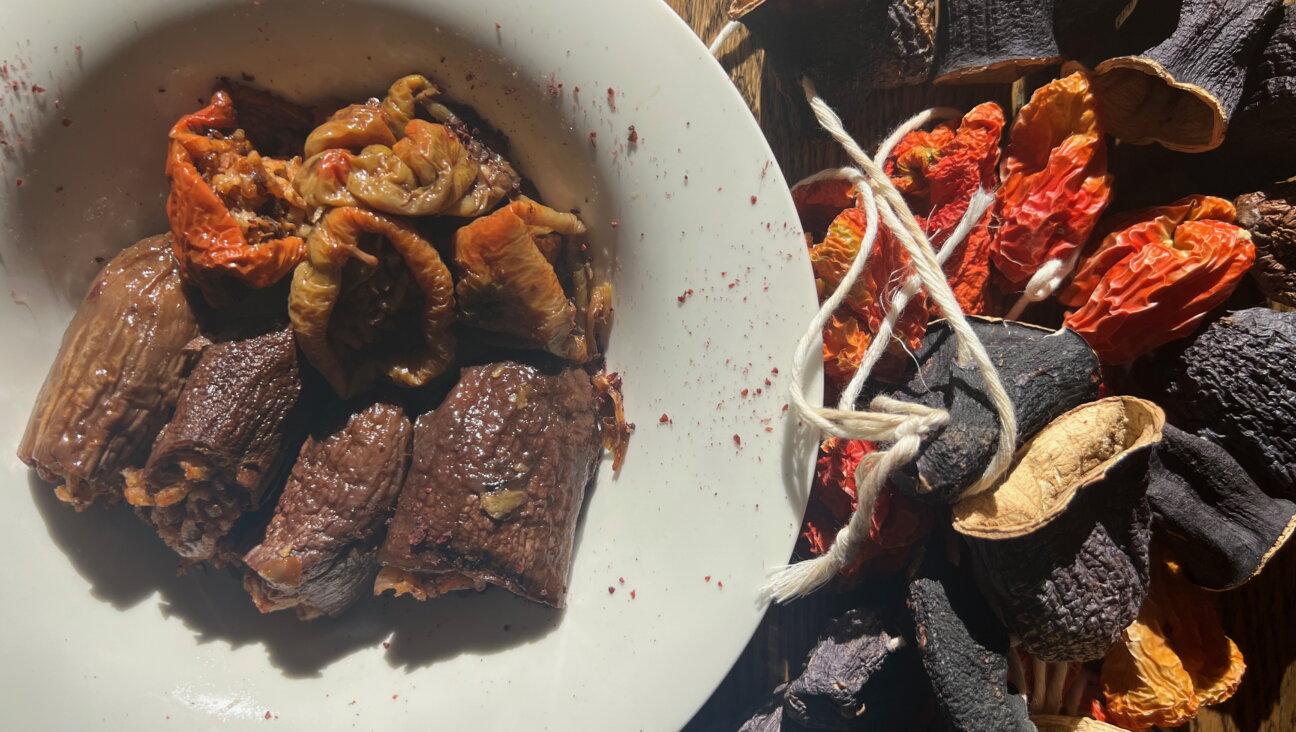Culinary Nationalism: Pride of the Plate
Most New Yorkers I’ve spoken to think Hungarian cooking is the oil-soaked stuffed cabbage served up at every synagogue dinner or worse, the dry kokosh cake (a long yeast-chocolate roulade) old-fashioned New York bakeries so pride themselves on. But good Hungarian food, the kind made lovingly in private kitchens, is completely different, almost unidentifiable to those outside the Hungarian community. Like any country’s food, Hungarian specialties are only “authentic” when they’re done well.
Recently, as my sister and I flipped through a popular cookbook, my eyes froze on a phrase in the introduction, where the author proclaims, with some pride, that they’ve “managed to teach Hungarian mothers to cook…” I read the sentence aloud, and my sister saw red.
“What does she know?” she demanded, “Hungarians have the best food. She just thinks nothing can beat her own.” Clearly, this hit a nerve with us proud Hungarian Jews. Our parents were born and raised in Hungary. We were brought up spending our summers in Budapest. Sure, we speak a language most people have never heard of, but when it comes to the kitchen, there can be no argument.
This feeling seems universal – no matter where you come from. Everyone claims their country’s cuisine is the best. They’re convinced that their grandmother’s soup is the authentic, and that it can never be imitated outside her kitchen. Even within the Jewish community, it seems the variations in our food, more than anything else, is the clear sign of our Diaspora. Jewish food can never be pinned down to one culinary style, since those of us in Central Europe don’t boast the same dishes as Jews in Italy or Morocco.
Some people have criticized Hungarians’ lack of spice variety and our habit of adding paprika to everything. Others have been surprised to fall in love with our cuisine.
Like every kitchen, ours has its share of surprises. The savory dishes are heavy and homey. The sweets are exactly the opposite. Cakes are light and creamy, often based on delicate vanilla, lemon, and rum. There is an entire, almost stuck-up culture surrounding afternoon coffee (never leave your spoon in the cup). And Hungarian tokay wine is underappreciated for its unique characteristics.
Specialties range far beyond Goulash (which for the record is pronounced goo-yash). They include dobos, a vanilla and chocolate pudding cake topped with a layer of hard caramel, meggyes, a sour-cherry pastry, szilvas gomboc (plum dumplings) the list goes on and on.
But I’ll not wax poetic about the magic of my family’s cooking. It will never compare to your mother’s. Or yours. Or yours. If you’ve got an extra seat at the table, I’d be more than happy to give your national dish a try. I’ll be sure to bring some turos gomboc(farmer cheese dumplings) for you to try.
The Forward is free to read, but it isn’t free to produce

I hope you appreciated this article. Before you go, I’d like to ask you to please support the Forward.
Now more than ever, American Jews need independent news they can trust, with reporting driven by truth, not ideology. We serve you, not any ideological agenda.
At a time when other newsrooms are closing or cutting back, the Forward has removed its paywall and invested additional resources to report on the ground from Israel and around the U.S. on the impact of the war, rising antisemitism and polarized discourse.
This is a great time to support independent Jewish journalism you rely on. Make a gift today!
— Rachel Fishman Feddersen, Publisher and CEO
Support our mission to tell the Jewish story fully and fairly.
Most Popular
- 1

Culture Cardinals are Catholic, not Jewish — so why do they all wear yarmulkes?
- 2

Fast Forward Ye debuts ‘Heil Hitler’ music video that includes a sample of a Hitler speech
- 3

News School Israel trip turns ‘terrifying’ for LA students attacked by Israeli teens
- 4

Fast Forward Student suspended for ‘F— the Jews’ video defends himself on antisemitic podcast
In Case You Missed It
-

Opinion This week proved it: Trump’s approach to antisemitism at Columbia is horribly ineffective
-

Yiddish קאָנצערט לכּבֿוד דעם ייִדישן שרײַבער און רעדאַקטאָר באָריס סאַנדלערConcert honoring Yiddish writer and editor Boris Sandler
דער בעל־שׂימחה האָט יאָרן לאַנג געדינט ווי דער רעדאַקטאָר פֿונעם ייִדישן פֿאָרווערטס.
-

Fast Forward Trump’s new pick for surgeon general blames the Nazis for pesticides on our food
-

Fast Forward Jewish feud over Trump escalates with open letter in The New York Times
-
Shop the Forward Store
100% of profits support our journalism
Republish This Story
Please read before republishing
We’re happy to make this story available to republish for free, unless it originated with JTA, Haaretz or another publication (as indicated on the article) and as long as you follow our guidelines.
You must comply with the following:
- Credit the Forward
- Retain our pixel
- Preserve our canonical link in Google search
- Add a noindex tag in Google search
See our full guidelines for more information, and this guide for detail about canonical URLs.
To republish, copy the HTML by clicking on the yellow button to the right; it includes our tracking pixel, all paragraph styles and hyperlinks, the author byline and credit to the Forward. It does not include images; to avoid copyright violations, you must add them manually, following our guidelines. Please email us at [email protected], subject line “republish,” with any questions or to let us know what stories you’re picking up.















